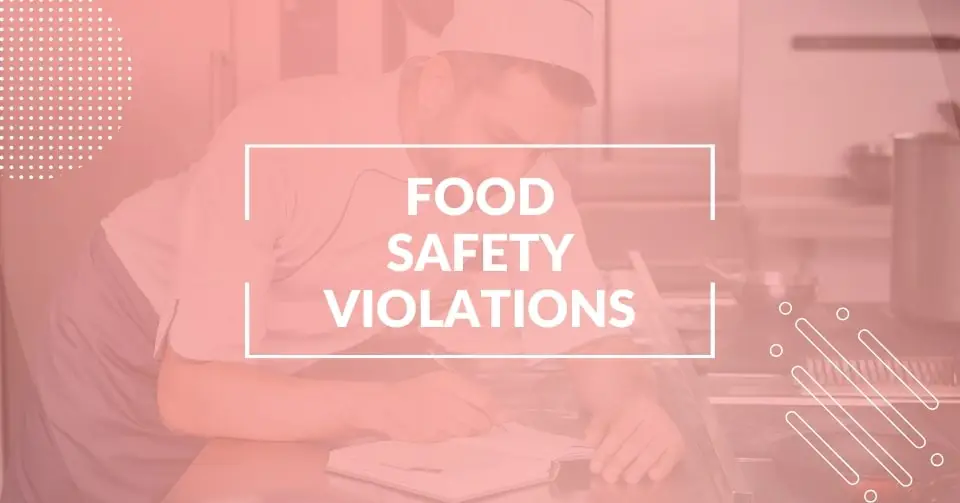At FoodReady food safety software and consulting, we receive many inquiries about environmental monitoring, its importance, and how we can help food businesses implement and manage their environmental monitoring programs.
Lucky for you, FoodReady is launching an Environmental Monitoring App to streamline these tasks. I will be writing a more in-depth article regarding our Environmental Monitoring app when it becomes available.
FoodReady can also help you assess whether an Environmental Monitoring Program (EMP) should be in place as part of your food safety management system.
What is Environmental Monitoring?
Environmental monitoring is the process of testing for pathogens such as Listeria monocytogenes, Salmonella spp., and Escherichia coli (E. coli) in zones where high-risk foods are processed into ready-to-eat (RTE) foods. This process helps prevent cross-contamination and ensures compliance with regulatory requirements such as FSMA (Food Safety Modernization Act) and GFSI (Global Food Safety Initiative) standards.
How is Environmental Monitoring Conducted?
The method for collecting samples typically involves swabbing different zones within the facility and sending the swabs to a certified microbiological laboratory for analysis. This process determines if pathogens like Salmonella, Listeria, and E. coli are present and contaminating the food. If pathogens are detected, corrective actions must be taken to eliminate them and prevent recontamination.
Environmental monitoring should cover multiple risk-based zones:
- Zone 1: Food contact surfaces (e.g., conveyor belts, cutting boards)
- Zone 2: Areas adjacent to food contact surfaces (e.g., equipment frames, control panels)
- Zone 3: Non-food contact surfaces within processing areas (e.g., floors, walls)
- Zone 4: Areas outside of production but within the facility (e.g., locker rooms, hallways)
Regular trend analysis of environmental monitoring results helps businesses recognize patterns and address potential issues before they escalate into food safety incidents.
ATP Testing
An alternative to sending swabs to a lab is ATP (Adenosine Triphosphate) testing. ATP is present in all organic matter. A well-cleaned surface should have very small amounts of ATP. A surface that is dirty will have higher levels of ATP. Measuring ATP is a gauge at which to measure how effective your surface cleaning is.
An area of contact is swabbed and the swab is then placed in an ATP tester also known as a luminometer. The luminometer instantly provides a result measured in Relative Light Units or (RLUs). The higher the RLUs the dirtier the surface is and the lower the RLUs the cleaner the surface. A business will set a sanitation standard for RLUs and measure against this unit.
ATPs only relay how well something is cleaned, not the type of pathogens present.
Who Needs Environmental Monitoring?
Environmental monitoring is critical for various food industry sectors, particularly those handling high-risk foods. Regulatory agencies and third-party auditors require food processors to establish robust environmental monitoring programs to mitigate the risk of pathogen contamination.
Industries that require environmental monitoring include:
- Meat, poultry, and seafood processors handling raw products.
- Dairy production facilities, especially those producing soft cheeses and pasteurized milk products.
- Bakery and confectionery manufacturers handling raw doughs and fillings.
- Fresh-cut produce facilities where fruits and vegetables are washed and packaged.
- Food service operations preparing ready-to-eat meals with no additional kill step.
Compliance with regulatory standards, such as those set by FSMA, USDA, and FDA, is essential for ensuring consumer safety and preventing foodborne illness outbreaks.
Unsure If You Need Environmental Monitoring?
Let our team help you assess your risk zones and compliance requirements.
Key Benefits of Implementing an Environmental Monitoring Program
- Early Detection of Contaminants – Identifies microbial risks before they lead to recalls.
- Improved Sanitation Procedures – Validates cleaning effectiveness and identifies areas for improvement.
- Regulatory Compliance – Ensures alignment with FDA, FSMA, USDA, and GFSI standards.
- Enhanced Traceability – Strengthens food safety documentation for audits and inspections.
- Consumer Protection – Reduces the risk of foodborne illness outbreaks and protects brand reputation.
Contact FoodReady Today!
A proactive environmental monitoring program is essential for food businesses looking to maintain high sanitation standards and regulatory compliance. FoodReady’s Environmental Monitoring App will help you streamline sampling procedures, result tracking, and corrective actions.
Contact FoodReady today to get started on your Environmental Monitoring Program and ensure your facility meets the highest food safety standards.
FAQs
Yes, environmental monitoring is often required by regulatory authorities and third-party food safety standards, especially for facilities processing high-risk foods. The Global Food Safety Initiative (GFSI) standards, for example, may require environmental monitoring for certain types of products and processing environments. Compliance with these requirements is essential for ensuring food safety and maintaining certifications.
The frequency of environmental monitoring depends on the specific risks associated with the food being processed, the history of contamination in the facility, and regulatory requirements. It’s generally recommended to conduct monitoring at regular intervals that are sufficient to ensure that control measures are effective and that the environment remains safe for food production.
The facility must take immediate corrective actions to eliminate the contamination source, re-clean, re-sanitize, and possibly conduct further testing to ensure safety.
Yes, even small businesses can implement basic environmental monitoring practices, such as ATP testing, to enhance food safety.







